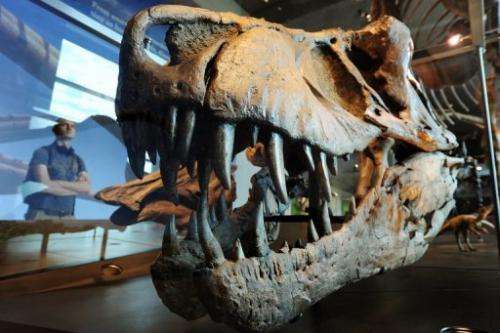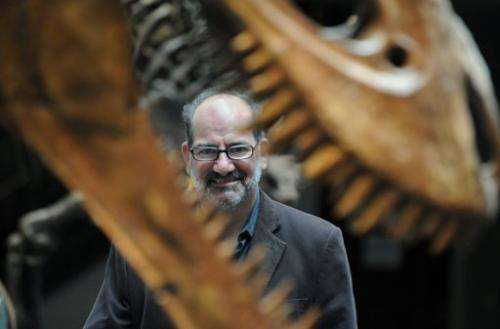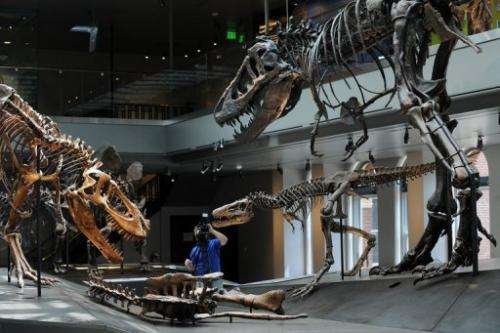New US exhibit probes dinosaur mysteries

Dinosaurs have captivated the public for decades, but a new US exhibit aims to show that there is still much about the giant reptiles that baffles experts and amateurs alike.
The 1,300 square meter (14,000 square foot) gallery at the Los Angeles natural history museum is set to open on July 16 and is seen as an important step in upgrading the museum ahead of its 100th anniversary in 2013.
The gallery will feature some 300 fossils and 20 skeletons accompanied by detailed signs explaining some of the questions experts wrestle with, like what dinosaurs ate, how they reproduced and why they disappeared.
"The emphasis (is) on how do we know what we know," chief curator Luis Chiappe, who heads the museum's dinosaur institute, told AFP.
"It's the nature of science. We know a lot about dinosaurs, but we also don't know a lot about them."

The exhibit -- which uses the specimens to illustrate how scientists pose questions and sometimes answer them -- is in part aimed at instilling wonder in visitors who have grown up watching dinosaurs on television and in movies.
"When you turn on the television and you watch some of the dinosaurs documentaries, they make you feel as if we knew everything about that, and that's not the case. There is so much that we need to discover," Chiappe said.
The gallery includes several large specimens, including a group of three skeletons of Tyrannosaurus rex -- the feared giant carnivore from Steven Spielberg's "Jurassic Park" -- at different ages.
The skeleton of a two-year-old T. rex -- believed to be the youngest specimen in the world -- is mostly a reconstruction, as all that was found were parts of the skull.
But the oldest in the group is "Thomas," one of the most complete T. rex skeletons in the world.
The gallery also features a horned Triceratops, a plate-backed Stegosaurus, and a Carnotaur -- a ferocious-looking carnivore only found in Argentina -- as well as prehistoric marine life from the time when oceans covered California.
"This is an excellent and incredibly dynamic period for the study of dinosaurs," Chiappe said.
"Not only we are finding spectacular dinosaurs in many places... it's a period in which we are experimenting a lot with modern technologies that are allowing us to learn a lot more about dinosaurs."

Alongside the popular giant dinosaurs the gallery also includes some smaller creatures like Fruitadens haagarorum, which resembles a T. rex but was not much larger than a housecat.
The little dinosaur was found in the western state of Colorado in the early 1970s, and the Los Angeles museum houses the only known specimens.
With such a diversity of species, Chiappe says it is easy to see why the long-extinct creatures are still so popular.
He says we are fascinated by "their enormous size, their weirdness, the fact that animals like these ones were alive, walked right there, in our own backyard in a way, millions of years ago."
"The fact that they're not animals that live in our imagination -- they are real animals, and yet they were almost magical because of their appearance -- all this makes them very popular," he said.
(c) 2011 AFP



















